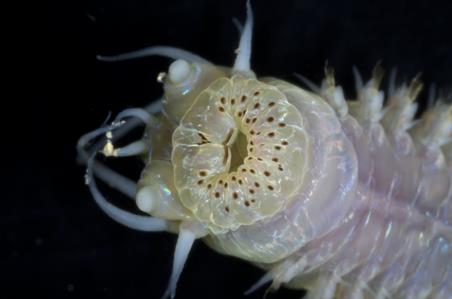General Description
In members of this genus there are bar-shaped paragnaths on the dorsal part of the eversible pharynx (Area VI); elsewhere there are conical paragnaths on most other regions of the pharynx. The dorsal bunch of chaetae are long-bladed spinigers throughout all segments. This species can be distinguished readily by paragnath counts on Area VI of the eversible pharynx. Only 3 species of Perinereis are common in southern Australia: P. amblyodonta has a single bar-shaped paragnath on each side of Area VI; P. variodentata has two bar-shaped paragnaths on each side of Area VI; P. vallata has an arc of 5-14 bar-shaped paragnath on each side of Area VI. Body up to about 8-10 cm long.
Biology
Only 3 species of Perinereis worms are common in southern Australia.
Habitat
Rocky shores on sheltered and (especially) exposed coasts; intertidal, occasionally to depth of about 10 m.
Reefs
Coastal shores
Distribution guide
South-eastern Australia, or south-western Australia, or north-eastern Australia, or north-western Australia.
Species Group
Depth
Water Column
Max Size
10 cm
Commercial Species
No
Species Code
MoV 2597
Identify
Conservation Status
- DSE Advisory List : Not listed
- EPBC Act 1999 : Not listed
- IUCN Red List : Not listed




